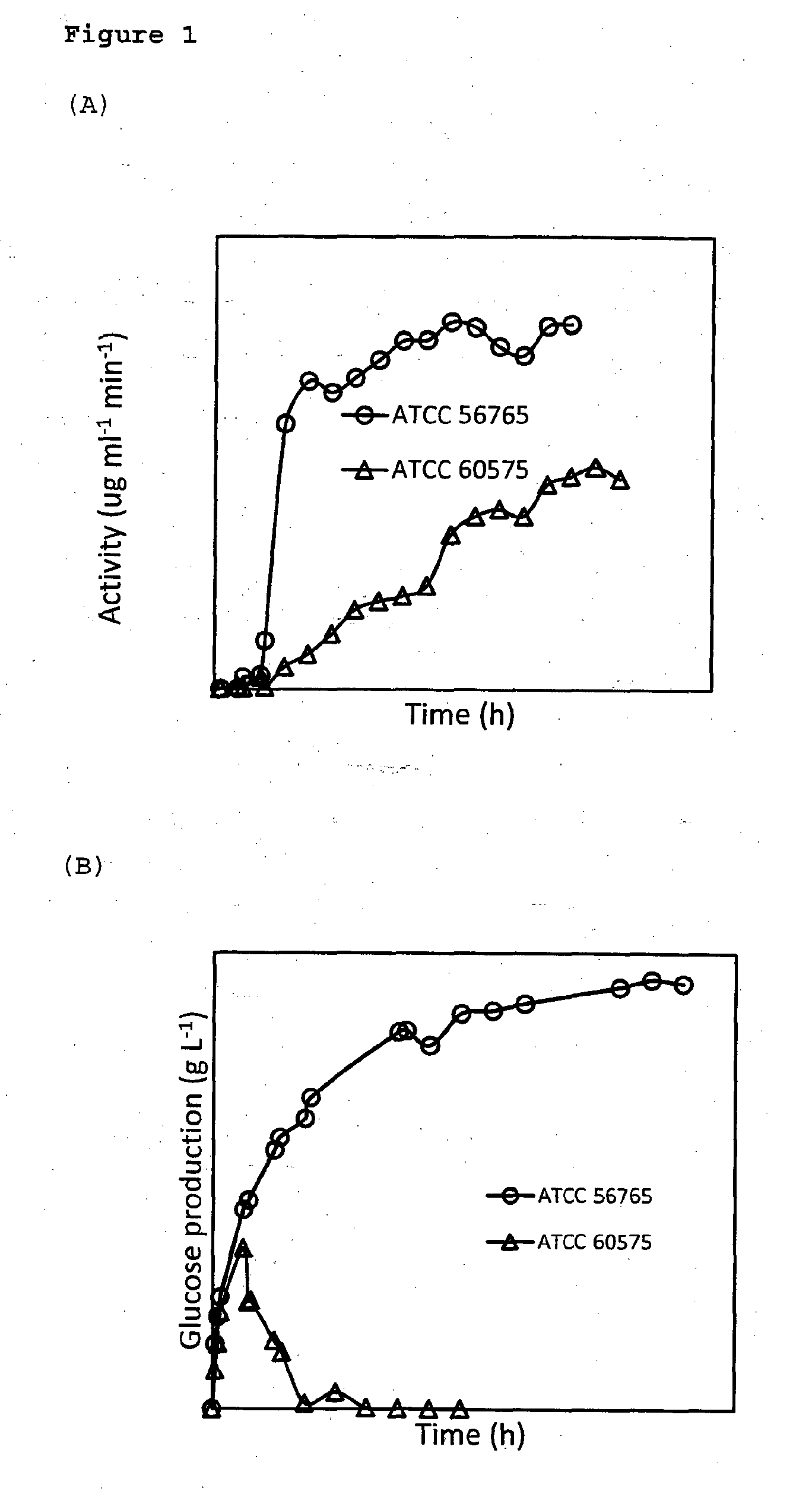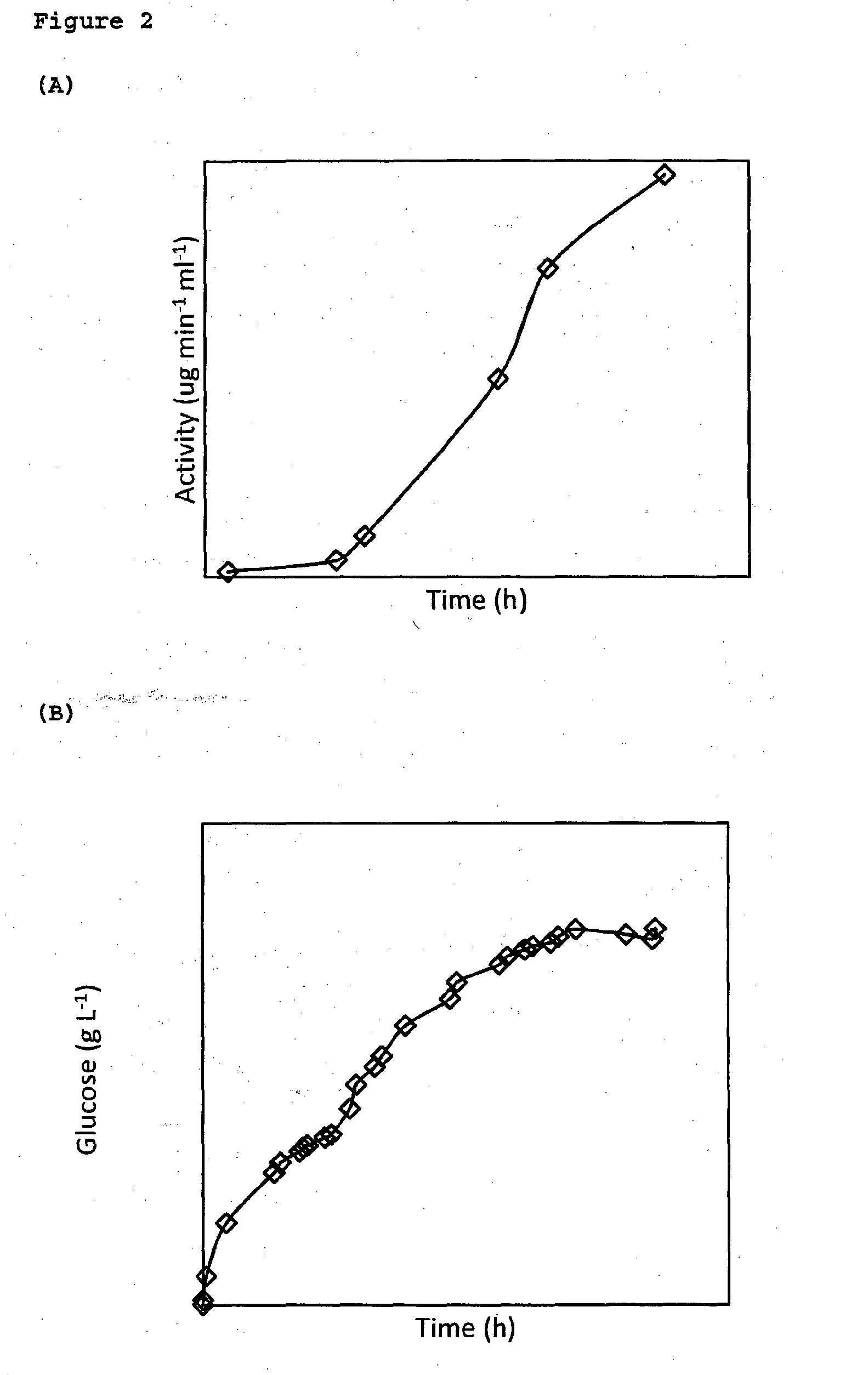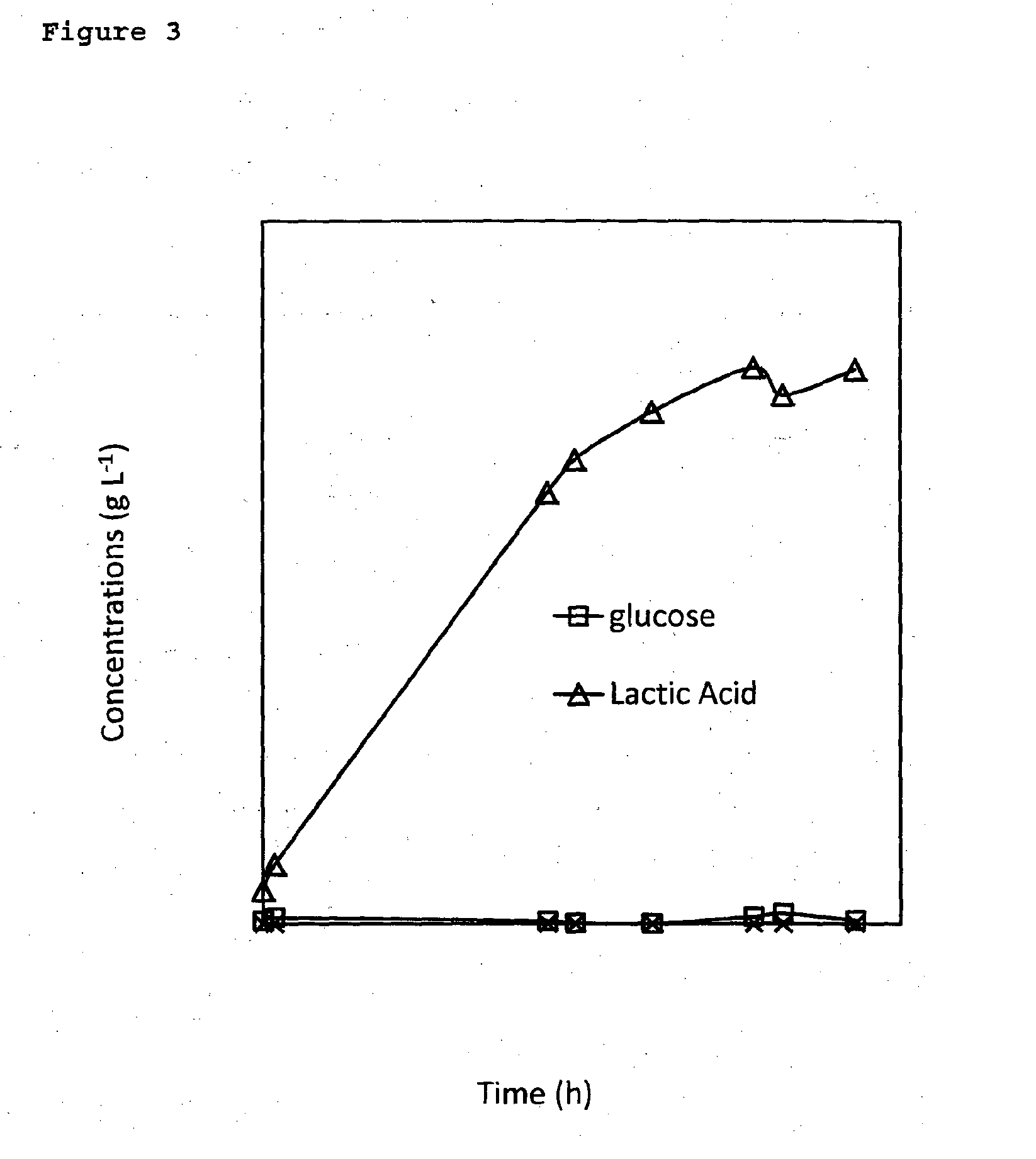Method for enzymatic hydrolysis of cellulose
a technology of cellulose and cellulose hydrolysis, which is applied in the direction of fertilization, etc., can solve the problems of cellulose hydrolysis, bottlenecks limiting commercialization, and the inability of most commercial microorganisms to directly utilize lignocellulose, and achieve the effect of significantly reducing the process cost of cellulose enzymatic hydrolysis
- Summary
- Abstract
- Description
- Claims
- Application Information
AI Technical Summary
Benefits of technology
Problems solved by technology
Method used
Image
Examples
example 1
Material and Methods
Microbes and Culture Media
[0107]Two cellulase-producing fungi, Trichoderma reesei RUT-C30 (ATCC 56765) and Drechslera dictyoides (ATCC 60575), were utilized. They were maintained on PDA plates at 4° C. and biweekly sub-cultured. Bacillus coagulans JI-n-12-1-1, a thermophilic lactic acid bacterium (optimal temperature 50° C.), was isolated from the Singapore environment by our lab and used to produce lactic acid. It is a homofermentative strain on both glucose and xylose and produces only L-lactic acid (ee>99%). The strain was maintained on MRS agar plates at 4° C.
[0108]Unless otherwise specified, the medium for cultivating the fungi for cellulase production contained (per liter) : 20 g of cellulose, 2 g of (NH4)2SO4, 10 ml of corn steep liquor, 1 g of K2HPO4, 2 g of KH2PO4, 0.2 g of MgSO4·7H2O, 0.5 g of NaCl and 1 ml of trace element solution. The trace element solution contained (per liter): 0.1 g of ZnSO4·7H2O, 0.01 g of H3BO3, 00.01 g of Na2MoO4·2H2O, 0.1 g of...
example 2
[0122]Examples of 1-pot, 2-step process for cellulose hydrolysis / fermentation
example 2a
[0123]The seed Trichoderma reesei RUT-C30 was prepared in 100 ml culture medium at (30±1)° C. for 3 days and 10% (v / v) of inoculum, was added to 1 L culture medium of pH 5.0 in a 2 L fermenter at (30±1)° C. The stirring rate was kept at 300 rpm and the pH was controlled at 3.75 for 48 h and 3.5 afterwards. Filter-sterilized air was continuously bubbled at ca 0.3 L / min to maintain a PO2 of 20%. After 67 h, the temperature was raised to (50±1)° C. and 20 g of cellulose was added followed by addition of another 20 g of cellulose at 115 h. After 356 h, the glucose concentration reached 31.2 g / L, corresponding to a 51% of cellulose conversion to glucose based on the total cellulose used.
PUM
| Property | Measurement | Unit |
|---|---|---|
| temperature | aaaaa | aaaaa |
| temperature | aaaaa | aaaaa |
| temperature | aaaaa | aaaaa |
Abstract
Description
Claims
Application Information
 Login to View More
Login to View More - R&D Engineer
- R&D Manager
- IP Professional
- Industry Leading Data Capabilities
- Powerful AI technology
- Patent DNA Extraction
Browse by: Latest US Patents, China's latest patents, Technical Efficacy Thesaurus, Application Domain, Technology Topic, Popular Technical Reports.
© 2024 PatSnap. All rights reserved.Legal|Privacy policy|Modern Slavery Act Transparency Statement|Sitemap|About US| Contact US: help@patsnap.com










